
A Leaky Roof? DIY It for the Rains!

The southwest monsoon is here! A leaky roof is anyone’s nightmare during the monsoon season. If not detected in time, it can cause extensive damage and demand repair involving much expenditure. This monsoon due to the COVID-19 pandemic, it may be useful to fix your leaking roof on your own. Roofs come in numerous designs and materials. The flat concrete variants are common, while sloping and other aesthetically pleasing options have also been seen. Likewise, the roofing materials are usually the organic and inorganic types. Wood falls in the category of organic roofing material, asbestos, fibreglass, and cement are inorganic. Sometimes a combination of these roofing materials is there for functional and aesthetic reasons.
Common Causes of Leaky Roofs

With time, these roofing materials degenerate and become a common cause of leakage in the roof. Since it is an external part of the civil structure, it is exposed to rain and summer heat, causing faster degeneration than the other structural components of the building. Design deficiency, water stagnation, and weathering are other common causes of a leaky roof.
DIY Leaky Roof
Before starting the DIY process of fixing the roof, it will help if you know about the cause and how it will look. Listed below are some common issues related to leaky roofs and how you can mend it at home.
1)Cracked Flashing

It looks like thin pieces of metal installed under shingles and on the roof joints. These flashings work as water-resistant barriers and are either concealed or exposed. When exposed, they appear as long runs of sheet metal and have rubberised coatings when covered. If the flashing is broken, you can try fixing it by using nails to secure it. Apply a coat of roofing sealant after securing the nail heads.
2)Broken Shingles
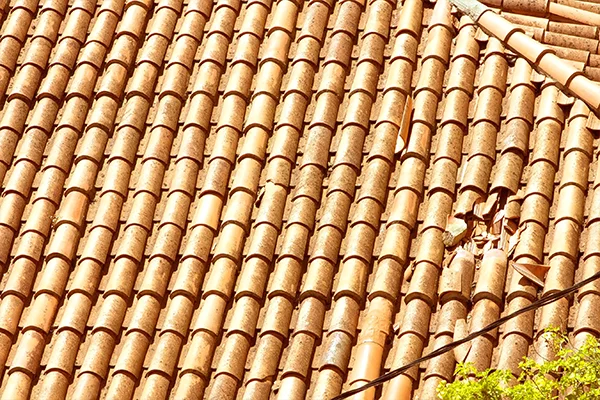
If shingles are the root cause behind the leaky roof, it is easy to discern and fix it. Shingles are the outer layer of a roof and you can easily spot a missing shingle with different coloured patches on the roof. Besides, shingles can also litter your yard post a rain or dust storm. You can fix it by pulling out a damaged shingle, replace it with a new one and secure it using new nails.
3)Cracked Vent Booting
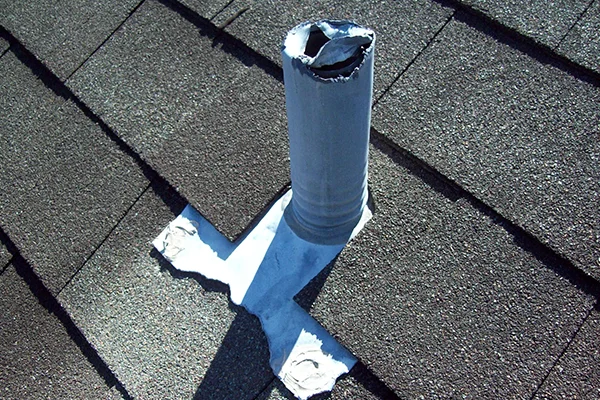
Roof vents look like small pipes and they stick out of the top of your roof, expelling the excess moisture from the house. You can identify this problem quickly as this kind of leakage usually leaves dark spots. The roof vents are sealed using flashing, which tends to decay with time. TO DIY a broken vent, you can first remove the rubber around it and using a pry bar break the seal on connecting shingles. Then, slide in a new rubber boot under the shingles and bring it down to the roof. Secure the boot with roofing nails and caulk the shingles to seal the new flashing.
4)Skylights Not Installed Properly

Do you always end up putting drip buckets around the sides of your skylight? Well, you know the cause behind the leaky roof. Alternatively, you may spot leaks and wet spots around these lights. This problem usually arises when the skylight is not correctly installed or the insulation decays along the skylight edges. DIY this kind of leakage by clearing debris off the skylight and sealing any cracks with a silicone layer.
5)Clogged Gutters
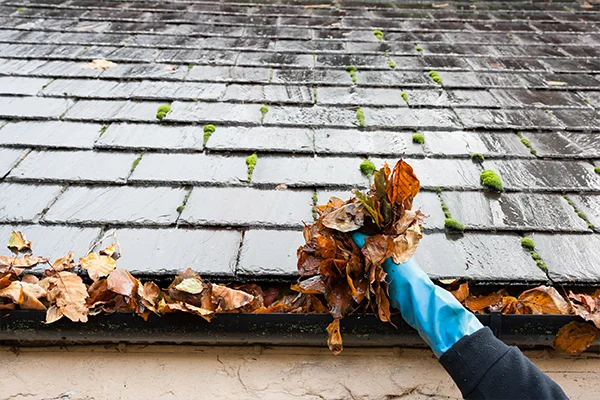
Are you wondering about the connection between a clogged drain and a leaking roof? The rainwater travels from the roof to the gutter. When there is a blockage, the rainwater will start accumulating in one area of the roof, leading to seepage through cracks. Cleaning the gutter and removing all the debris is the only way to get rid of this concern.
If you are unable to spot any of the above concerns and face the problem of a leaky roof, try DIY roof patching and roof covering.
6)Roof Patching
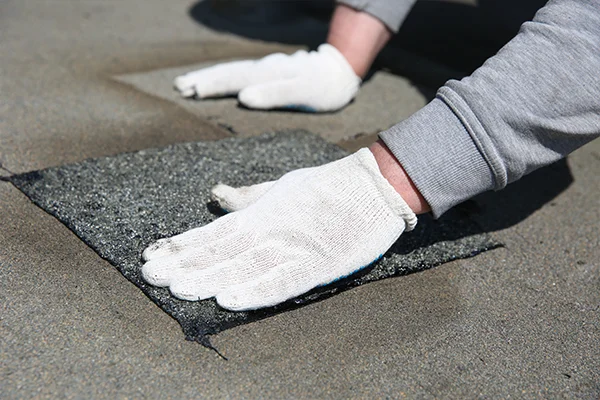
Go to the attic if you have access, sponge the standing water, lay a piece of plywood across the joists, and keep a bucket to contain the water. Follow the leak back to the point of origin on the roof, make a temporary patch using roofing tar and a piece of plywood.
7)Roof Covering
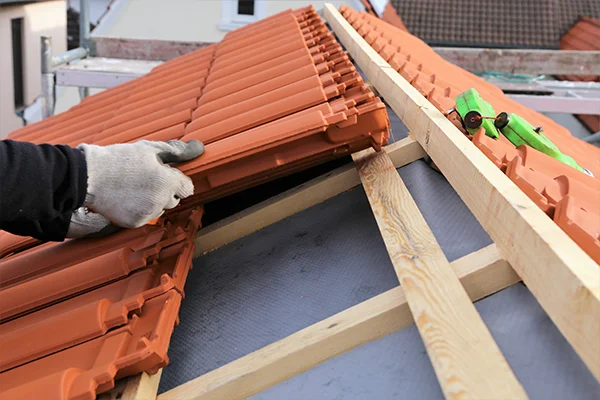
If you can’t get to the attic, make a plastic roof cover using a utility knife using polythene plastic. Staple the plastic to the wood and sandwich it between two pieces of wood using nails. Go to the roof and place this covering along the eaves.
Hope these DIY tricks come useful in mending the leaky roof this monsoon season. If you have been using any different ideas, share with us in the comments below and let everyone benefit.
During the roof inspection, if you detect design-level complexities and need professional assistance, connect with a TATA Steel Aashiyana expert. You can get roof design guidance and a list of notable service providers and dealers in your town who can come to your rescue. Consult the experts and sort design level issues quickly. Book an appointment with an expert now.
Subscribe and stay updated!
Get all the updates on our latest articles and client stories. Subscribe now!
Other articles you might like
-
 Interior productsFeb 02 2023| 3.00 min ReadHow To Estimate Your Home Building Cost Home Construction Cost Calculator by tata aashiyana can assist you to determine approximate home construction cost based your choice of materials.
Interior productsFeb 02 2023| 3.00 min ReadHow To Estimate Your Home Building Cost Home Construction Cost Calculator by tata aashiyana can assist you to determine approximate home construction cost based your choice of materials. -
 TIPS AND TRICKSFeb 02 2023| 2.30 min ReadHow To Remove Mold From Your Roof Guide for Algae & Moss Removal on Your Roof · 1. Using Pressure Washers 2. Using Water-Bleach Mixture 3.Using Trisodium Phosphate & More. Click to Know More!
TIPS AND TRICKSFeb 02 2023| 2.30 min ReadHow To Remove Mold From Your Roof Guide for Algae & Moss Removal on Your Roof · 1. Using Pressure Washers 2. Using Water-Bleach Mixture 3.Using Trisodium Phosphate & More. Click to Know More! -
 Home designsFeb 02 2023| 2.00 min ReadSummer Home Maintenance Hacks Summer Home Maintenance Checklist · 1. Repair & Repaint 2. Prepare To Stay Cool 3. Don't Miss The Roof 4. Keep Your Grass Green 5. Check Your Gutters & More
Home designsFeb 02 2023| 2.00 min ReadSummer Home Maintenance Hacks Summer Home Maintenance Checklist · 1. Repair & Repaint 2. Prepare To Stay Cool 3. Don't Miss The Roof 4. Keep Your Grass Green 5. Check Your Gutters & More -
 TIPS AND TRICKSFeb 01 2023| 3.00 min ReadTips to build a new home in 2021 The journey from buying a plot of land to constructing your own home on it is pretty amusing. It takes a long time and requires your complete dedication.
TIPS AND TRICKSFeb 01 2023| 3.00 min ReadTips to build a new home in 2021 The journey from buying a plot of land to constructing your own home on it is pretty amusing. It takes a long time and requires your complete dedication.




